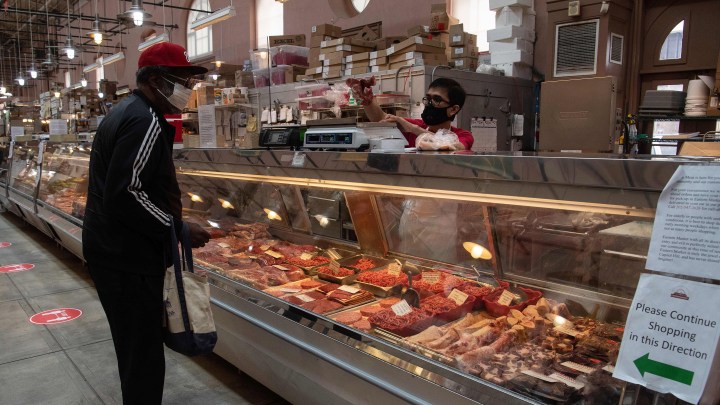
Beef market still feeling the effects of COVID-19
Remember back when people were panic-buying burger patties, meat prices were erratic and there were concerns about the food supply chain? We checked back in on that situation, and there are still some lingering issues.
Livestock auctions took some precautions towards the beginning of the pandemic, limiting who can come, but most stayed open.
Those auctions were crucial for getting ranchers a good price and to keep the meat moving, said Chelsea Good is with the Livestock Marketing Association.
“We’ve worked with both our federal officials, but then also our states and local communities to help get them that critical food supply designation and allow them to continue operating in this important time,” she said back in March.
Over the last few months, disruptions weren’t as bad as they could have been. But Good said some consumer practices have changed. People are buying what’s easiest to cook themselves, like “ground beef, hamburger, to some degree roasts. Things people know how to prepare at home and are, you know, pretty comfortable with,” she said.
Consumers aren’t buying as much of the higher-end cuts of beef, though. Restaurants aren’t buying as many of those cuts anymore, either. And getting that meat to the store is still a bit of an issue – especially for those nicer, local cuts.
The problem is processing the meat. When COVID-19 infected workers and slowed major packing plants, some ranchers turned to the smaller butchering facilities. And now those are backed up, too.
Good said it’s even hard for hunters to find places to process deer.
“They called their local meat lockers and got quite a surprise in terms of the wait time. You know, at this point, it’s well into 2021. I’ve heard of some that are backed up well into even 2022,” she said.
And more and more ranchers have been turning to direct-to-consumer sales and using those local butchers, too.
Lorianne Lau is a rancher in Idaho. She’s been selling direct-to-consumer around that state and Utah for 16 years, but when she called her butcher back in May, he was already booked clear through April 2021.
“We’ve just been following up with him trying to say, you know, if you can sneak any in, we’d sure love to. And he’s like, ‘You and everybody and their uncle,’” she said.
Lau said her sales have picked up during the pandemic because people were concerned about the meat supply chain. They wanted to buy directly from ranchers. And she’s hoping that practice gets easier for all ranchers in the years to come.
Federal requirements to butcher cattle are easier for larger operations to meet. But ranchers who work with those large processors and sell their cows on the market are having troubles too.
“I’ve heard a lot of issues with people not being particularly happy with the prices they’re being offered,” she said.
Live cattle prices did drop more than 11% between mid-February and mid-December, according to Eric Belasco.
Belasco is an agricultural economist at Montana State University. When we talked to him in March, he was concerned about what would happen if workers at packing plants got COVID-19.
“Especially some of the larger packing plants, if they were to shut down, you’d see a remarkable impact on the market for beef,” he said this spring.
Of course, workers did get sick at the plants. The investigative journalism Food & Environment Reporting Network reports more than 50,000 meat packing workers got COVID-19, and more than 250 workers have died.
And the Department of Justice is investigating the major companies that control the beef processing market for price fixing during the pandemic.
Belsaco pointed out prices are at least less volatile now than they were back in April. That will allow farmers to budget for next year. And he said this whole ordeal shows how resilient the meat processing system is.
“You had a demand shock and a supply shock, kind of like which we’ve never seen before. And there were some slowdowns. But by and large, you know, it kept delivering food to market,” he said.
But of course, some argue it could have been even more resilient had there been more, decentralized packing plants.
This story was produced by the Mountain West News Bureau, collaboration of public media stations funded in part by the Corporation for Public Broadcasting. This story originally ran on KUNM.
There’s a lot happening in the world. Through it all, Marketplace is here for you.
You rely on Marketplace to break down the world’s events and tell you how it affects you in a fact-based, approachable way. We rely on your financial support to keep making that possible.
Your donation today powers the independent journalism that you rely on. For just $5/month, you can help sustain Marketplace so we can keep reporting on the things that matter to you.


















